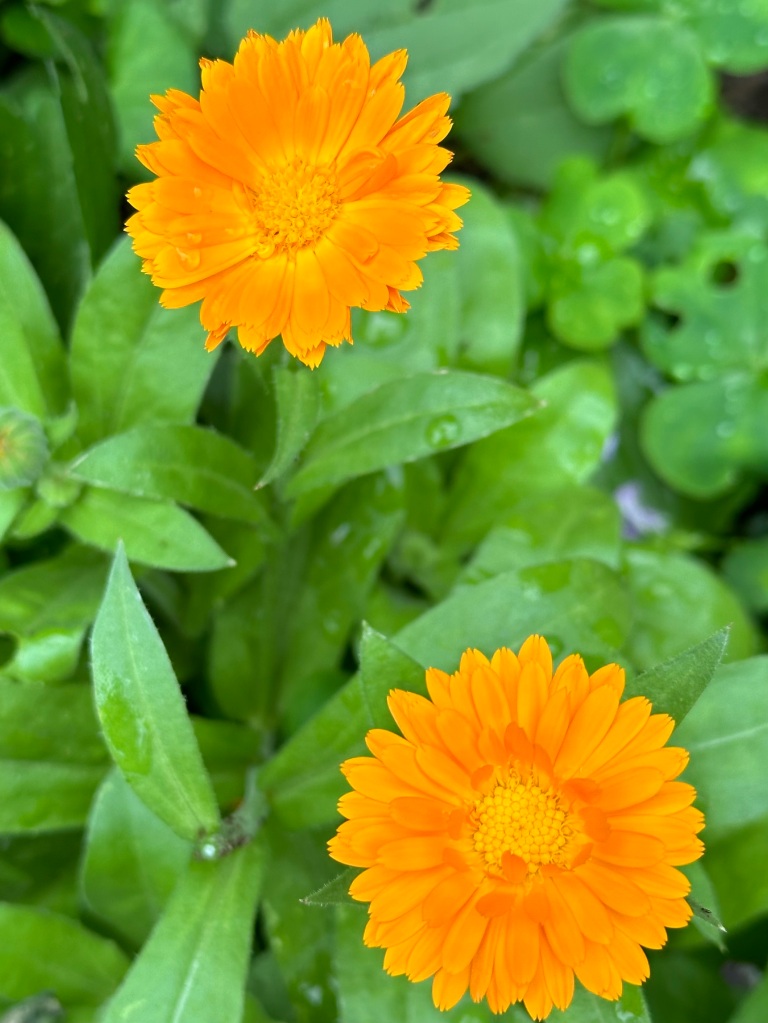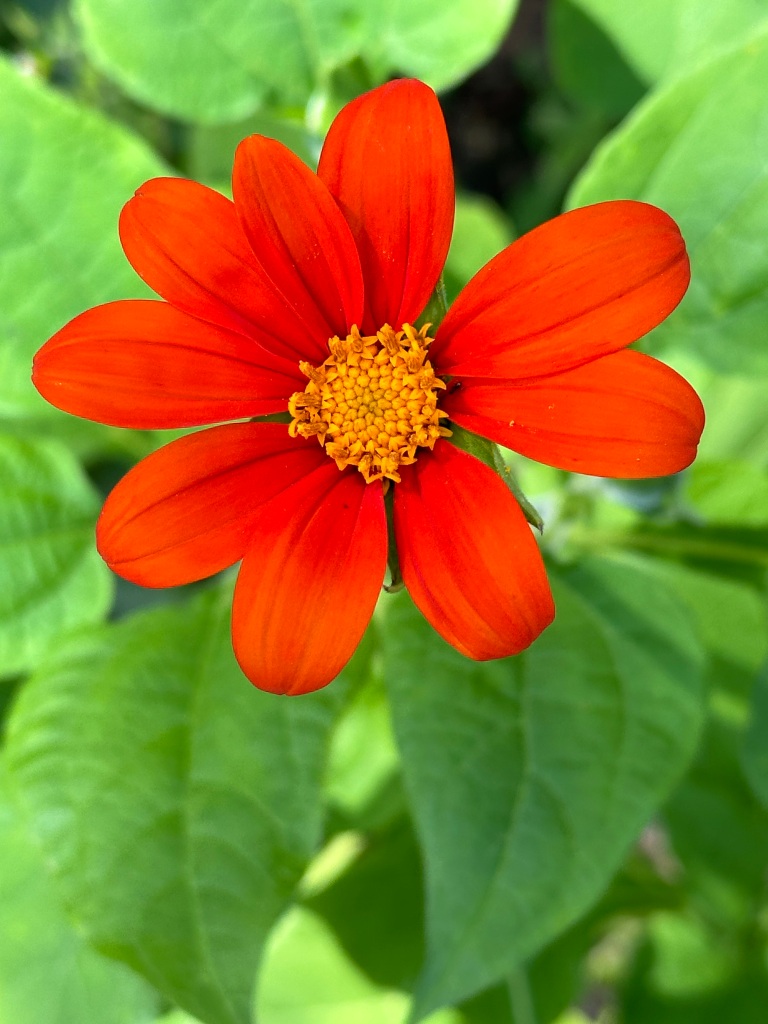The Asteraceae
Posted: May 27, 2024 Filed under: Gardening | Tags: Black-Eyed Susan, Blanket Flowers, Calendula, Echinacea purpurea, Gulf Coast gardening, Mexican Sunflower, Pot Marigold, Purple Cone Flower, Southern Gardening, Subtropical Gardening, Tickseed/Lance-leaved Coreopsis, Tithonia, Zinnia 11 CommentsThe Asteraceae are daisy-like flowers. I found a great list of them in Encyclopedia Britannica. All the names were familiar except pussy-toes. I don’t know who created this name, but I find it funny. Here are the Asteraceae that are currently growing in my garden beds.

Blanket Flower

Black-eyed Susan

Calendula or Pot Marigold

Mexican Sunflower or Tithonia

Tickseed

Purple Coneflower or Echinacea purpurea.

Zinnia
Flowers Are Finally Blooming
Posted: May 15, 2023 Filed under: Gardening | Tags: Automatic Gardening, Black Eyed Susan, Echinacea purpurea, Gulf Coast gardening, Justicia brandegeeana, Mexican Hat, Purple Cone Flower, Ratibida columifera, Salvia guaranitica, shrimp plant, Southern Gardening, Tithonia 16 Comments
Heat and rain have brought flowers to the Automatic Garden. The blooming had been a bit delayed this year as the plants froze and had to come back from their roots. They have not disappointed. Above is a Mexican Hat, Ratibida columifera. I have been surprised that it has not reseeded over the years. The original has only made one other plant.

Shrimp plants, Justicia brandegeena, were the flowers that blew my mind when I moved to Texas. I was at someone’s house for a party and the host had a big vase full of them. It was many years before I could grow my own, but I never forgot them. This one is from my mother-in-law.

I have added other varieties to my garden. Muted Yellow is the name of this variety, but somehow in my mind, it is green. I guess you see what you want to see.

Fruit Cocktail makes a fun flower and is doing well this year. I also have one more Shrimp Plant that is dark pink, but not yet in bloom.

This Purple Coneflower, Echinacea purpurea, has found its happy place when it somehow planted itself into a bed far from the others.


The Salvia guaranitca has put out flower stalks making the hummingbirds very happy.

I have had this Black-Eyed Susan for so long that I don’t know the variety or where I got it. It is a self-seeding annual that rambles here and there around the garden.

The Mexican Sunflower or Tithonia is blooming early from last year’s seed.
I always have a little panic every year that maybe my flowers will not return, but as in years before the plants came back and gifted me with their flowers.
More Spring Blooms
Posted: April 25, 2022 Filed under: Gardening | Tags: Amaryllis, Automatic Gardening, Blanket Flowers, Gulf Coast gardening, Poppy, Purple Cone Flower, Salvia coccinea, Southern Gardening, Subtropical Gardening 22 Comments
I saw these poppies at a local botanical garden many years ago when I was just beginning to learn to garden in this climate. I didn’t even know what kind of plant they were, but it was love at first sight. I went into the office to inquire about them and the docent gave me free seeds. What a day! I have been growing these beautiful poppies for close to 28 years.

The lavender Salvia coccinea has made some very healthy blooms after a dose of fertilizer.

I find that volunteers like this Purple Cone Flower sometimes do better after they plant themselves where they want.

A spring favorite here is Blanket Flowers.

The Amaryllis that I bought last year surprised me and bloomed again with four big flowers.
Successful Seeds: Good News Bad News
Posted: May 24, 2021 Filed under: Uncategorized | Tags: Automatic Gardening, Bishop's Flower, Drommond Phlox, Golden-Wave Coreopsis, Gulf Coast gardening, Love-in-the-Mist, Monarch Butterfly, Purple Cone Flower, rabbits, Southern Gardening 17 Comments
I have many plants that naturally reseed very well, but I do like to add others for a variety of blooms.

In this climate we plant most seeds in the fall, say a prayer and wait until spring.
I do this almost every year and most seeds do not grow to produce flowers.

So, the good news is that many of the seeds I planted last fall grew and flowered.
The bad news is that I think I have figured out why the plants have not matured in the past. I have not seen a rabbit in my yard since early last spring and the rabbits are probably the reason that most of the seedlings never matured, as they are a tasty treat for rabbits. There is a virus killing rabbits in West Texas and I am concerned it has arrived here. Of course, I was never happy that rabbits ate so much of my garden, but I did make friends with several and they would come right up to me to be fed. It would be very sad if a virus was the reason for the lack of rabbits in my yard.
Summer Bloomers
Posted: July 23, 2018 Filed under: Gardening | Tags: Automatic Gardening, Black Eyed Susan, Butterflly Weed, Cleome, Gardening, Gulf Coast gardening, Hibiscus coccineus, Justicia brandegeeana, Monarch Butterfly, My Kitchen Window, Purple Cone Flower, Shimp plant, Southern Gardening, subtropical climate, Subtropical Gardening, Texas Star Hibiscus, Year-round gardening 17 Comments—————–
The summer heat is on and we are looking at 102f degrees (actual temperature) for the next few days. Thankfully, some of my faithful flowers can take the heat.
The Texas Star Hibiscus (Hibiscus coccineus) greets me from my kitchen window each morning. Yes, we do like to name as many things “Texas” as we can. I recently found out that George Washington also grew this plant. He probably didn’t call it Texas Star.
The Black Eyed Susan is a reseeding annual and can pop up anywhere in the garden. I never mind volunteers and just transplant them back in their beds.
The seeds for this Cleome are from my father, who always called them Spider Plants.
Many bloggers have shown photos of Purple Cone Flowers. I just have one hanging on, as the deer and rabbits ate most of the flowers.
Butterfly Weed is ready and waiting for the Monarch Butterflies.
I was in total awe when I first saw a Shrimp Plant (Justicia brandegeana), I had never seen a plant like it. Now, it happily fills my garden from a cutting given to me by my mother-in-law.










